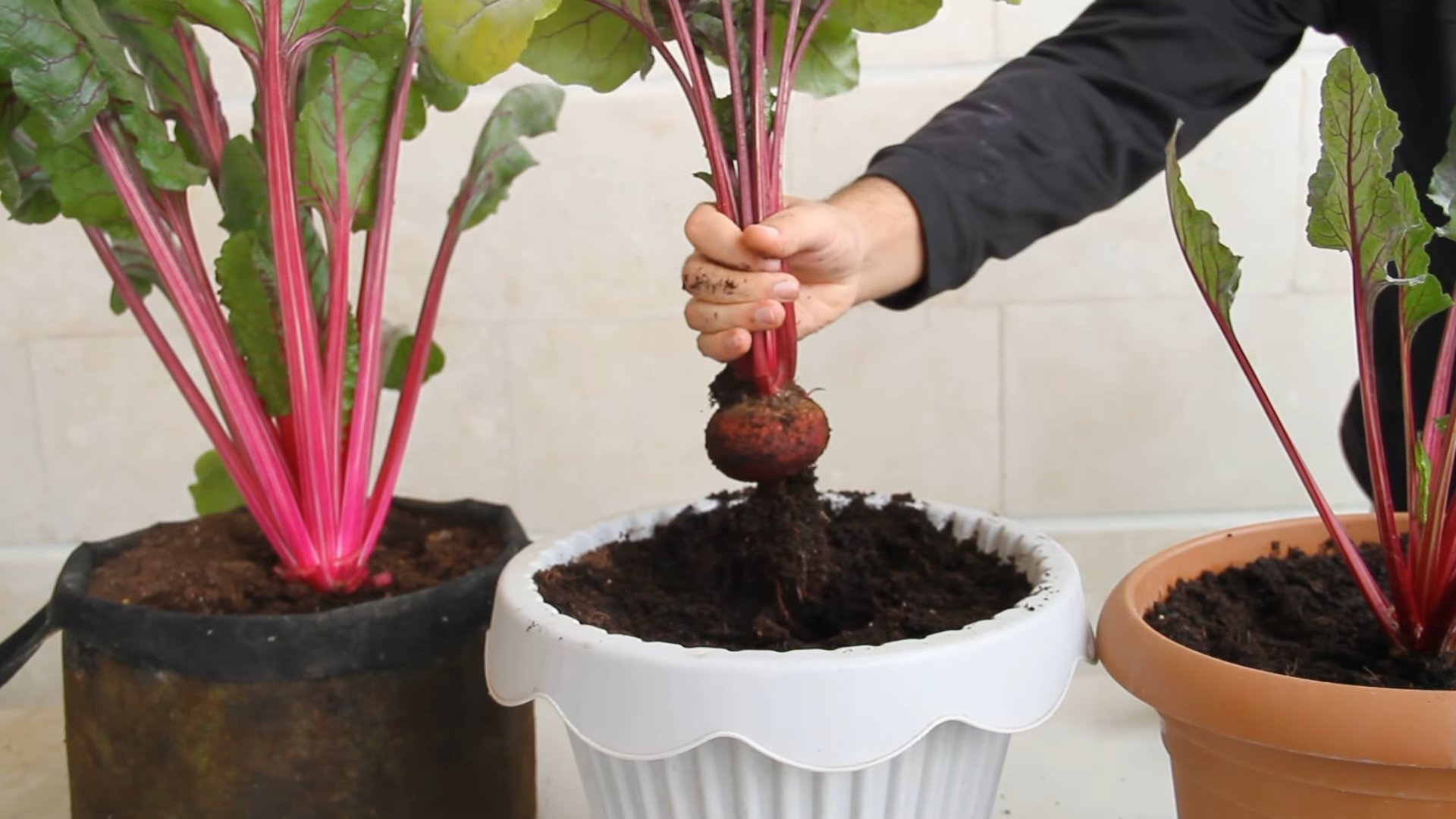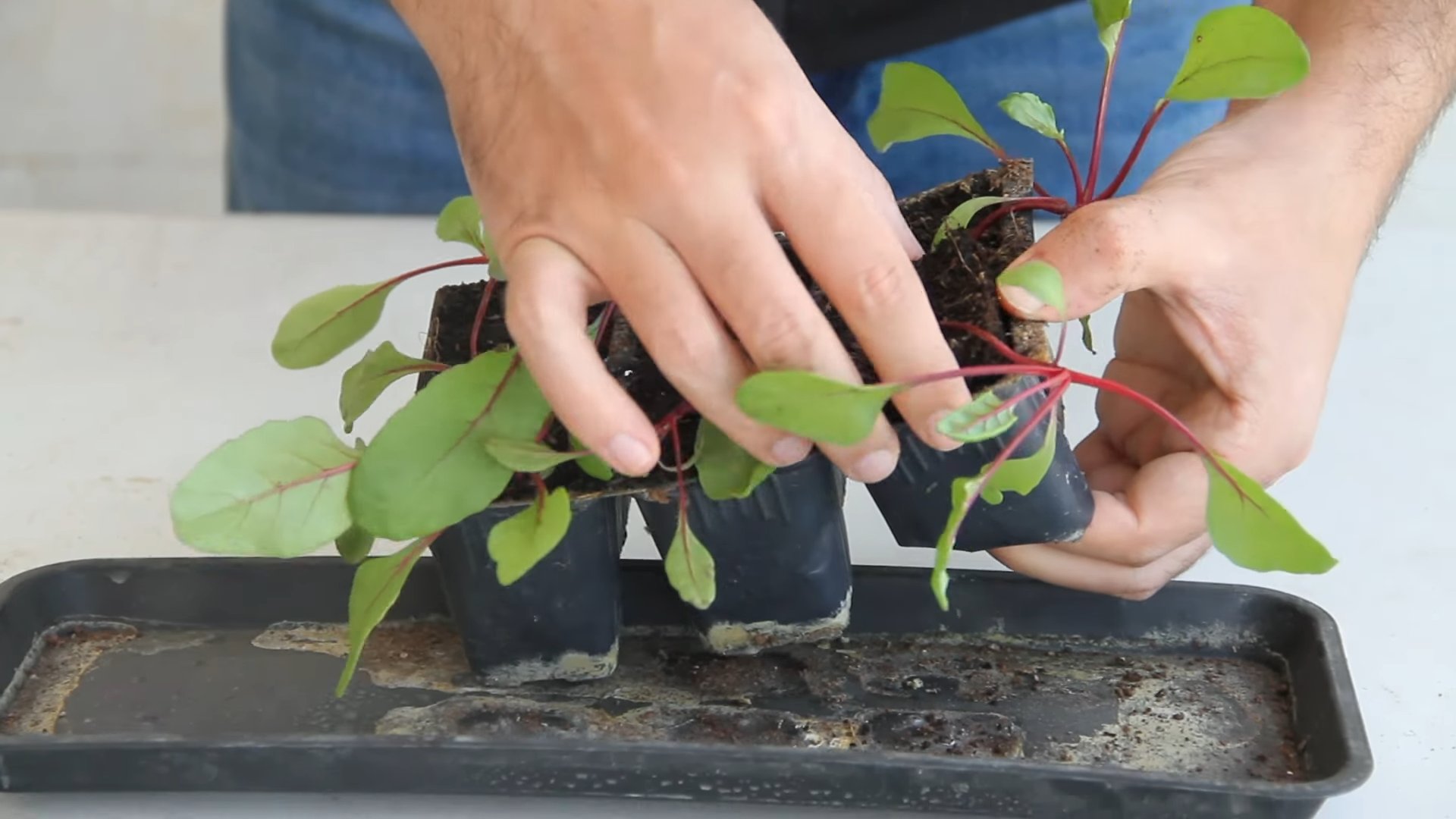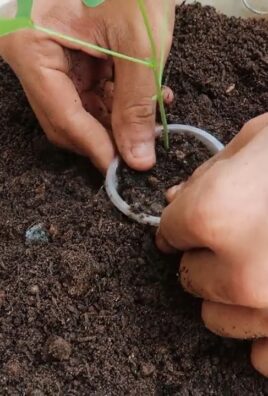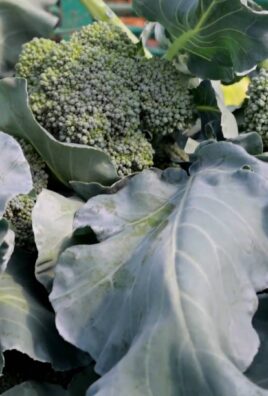Grow Beets in Containers? Absolutely! Imagine plucking vibrant, earthy beets straight from your patio – it’s easier than you think! For centuries, beets have been a staple in diets across the globe, from ancient Roman gardens to the hearty borscht of Eastern Europe. But you don’t need acres of land to enjoy these nutritional powerhouses.
I know what you’re thinking: gardening can be intimidating, especially if you’re short on space. But that’s where the magic of container gardening comes in! This DIY guide will unlock the secrets to successfully grow beets in containers, even if you’re a complete beginner.
Why should you bother? Well, fresh, homegrown beets taste infinitely better than anything you’ll find in the store. Plus, you’ll know exactly what’s gone into them – no mystery chemicals here! And let’s be honest, there’s something incredibly satisfying about nurturing a plant from seed to harvest. So, ditch the grocery store beets and let’s get our hands dirty! I’m going to show you how to cultivate a thriving beet crop, right on your balcony, porch, or even a sunny windowsill. Get ready to enjoy the sweet, earthy goodness of homegrown beets!

Growing Beets in Containers: A Beginner’s Guide
Okay, so you’re thinking about growing beets in containers? Awesome! It’s totally doable, even if you don’t have a huge garden. I’ve done it myself, and let me tell you, there’s nothing quite like pulling a fresh, vibrant beet straight from your own little container garden. This guide will walk you through everything you need to know, from choosing the right container to harvesting your delicious beets. Let’s get started!
Choosing the Right Container and Soil
First things first, you need a good home for your beets. Here’s what to keep in mind:
* Size Matters: Beets need room to grow, especially underground. Aim for a container that’s at least 12 inches deep and 12 inches wide. A larger container is always better, as it gives the roots more space to develop. I’ve found that a 5-gallon bucket works perfectly for a few plants.
* Drainage is Key: Beets hate soggy feet! Make sure your container has plenty of drainage holes. If it doesn’t, you can easily drill some yourself.
* Material Doesn’t Matter (Too Much): Plastic, terracotta, even fabric pots will work. Just consider the weight, especially if you plan on moving the container around.
* Soil is King: Don’t skimp on the soil! Use a high-quality potting mix that’s well-draining and rich in organic matter. Avoid using garden soil, as it can be too heavy and compact for container gardening. I like to amend my potting mix with compost for extra nutrients.
Planting Your Beet Seeds
Now for the fun part: planting!
1. Gather Your Supplies: You’ll need your container, potting mix, beet seeds, and a watering can.
2. Fill the Container: Fill your container with potting mix, leaving about an inch or two of space at the top.
3. Sow the Seeds: Beet seeds are actually clusters of seeds, so you’ll likely get more than one seedling from each “seed.” Sow the seeds about ½ inch deep and 1-2 inches apart. You can always thin them out later.
4. Water Gently: Water the soil gently until it’s evenly moist. Avoid overwatering, as this can cause the seeds to rot.
5. Find a Sunny Spot: Beets need at least 6 hours of sunlight per day. Place your container in a sunny location.
6. Be Patient: Beet seeds can take anywhere from 5 to 14 days to germinate, so don’t get discouraged if you don’t see sprouts right away. Keep the soil consistently moist during this time.
Caring for Your Beet Plants
Once your beet seedlings emerge, it’s time to start caring for them.
1. Thinning: Once the seedlings are a few inches tall, thin them out to about 3-4 inches apart. This will give the remaining plants enough room to grow. Don’t just pull them out! Gently snip the unwanted seedlings at the soil line to avoid disturbing the roots of the remaining plants. You can even eat the thinnings as microgreens!
2. Watering: Water your beet plants regularly, especially during hot, dry weather. The soil should be consistently moist, but not soggy. Check the soil moisture by sticking your finger into the soil. If the top inch feels dry, it’s time to water.
3. Fertilizing: Beets are heavy feeders, so they’ll benefit from regular fertilization. Use a balanced liquid fertilizer every 2-3 weeks. Follow the instructions on the fertilizer label. I like to use a fertilizer that’s specifically formulated for vegetables.
4. Weeding: Keep your container free of weeds. Weeds can compete with your beet plants for nutrients and water.
5. Sunlight: Ensure your beets are getting enough sunlight. If they’re not getting at least 6 hours of sunlight per day, consider moving the container to a sunnier location.
6. Watch for Pests: Keep an eye out for pests like aphids and flea beetles. If you spot any pests, you can try spraying them with insecticidal soap or neem oil.
Harvesting Your Beets
The moment you’ve been waiting for!
1. When to Harvest: Beets are typically ready to harvest in 50-70 days, depending on the variety. You can harvest them when the roots are about 1-3 inches in diameter. Don’t let them get too big, as they can become tough and woody.
2. How to Harvest: Gently loosen the soil around the beet with a trowel. Then, grasp the beet by the base of the leaves and pull it straight up. If the beet is stubborn, you may need to wiggle it back and forth to loosen it.
3. Harvesting the Greens: Don’t throw away the beet greens! They’re delicious and nutritious. You can harvest the greens at any time, but be careful not to remove too many leaves at once, as this can stunt the growth of the beet root.
4. Storing Your Beets: Store your beets in the refrigerator. Cut off the greens, leaving about an inch of stem attached. Store the greens separately in a plastic bag. Beets can last for several weeks in the refrigerator.
Troubleshooting
Even with the best care, you might encounter some problems. Here are a few common issues and how to fix them:
* Poor Germination: If your beet seeds aren’t germinating, it could be due to several factors:
* Old Seeds: Beet seeds don’t last forever. Make sure you’re using fresh seeds.
* Dry Soil: Keep the soil consistently moist during germination.
* Cold Soil: Beet seeds germinate best in warm soil.
* Leggy Seedlings: If your seedlings are tall and spindly, they’re not getting enough sunlight. Move the container to a sunnier location.
* Small Roots: If your beet roots are small, it could be due to several factors:
* Crowding: Make sure you’ve thinned the seedlings properly.
* Poor Soil: Use a high-quality potting mix and fertilize regularly.
* Lack of Water: Water your beet plants regularly, especially during hot, dry weather.
* Bolting: Bolting is when a plant prematurely flowers and goes to seed. This can happen if the plants are stressed by heat or drought. To prevent bolting, keep the soil consistently moist and provide shade during the hottest part of the day.
* Leaf Spot: Leaf spot is a fungal disease that can cause brown spots on the leaves. To prevent leaf spot, avoid overhead watering and provide good air circulation. If you see signs of leaf spot, remove the affected leaves and spray the plants with a fungicide.
Choosing Beet Varieties for Containers
Not all beet varieties are created equal when it comes to container gardening. Here are a few of my favorites:
* ‘Early Wonder Tall Top’: This variety is known for its early maturity and delicious greens.
* ‘Detroit Dark Red’: A classic beet variety with deep red roots and excellent flavor.
* ‘Chioggia’: This Italian heirloom beet has beautiful red and white striped roots. It’s also known for its mild flavor.
* ‘Golden’: A yellow beet variety with a sweet, mild flavor. It’s also less likely to stain your hands than red beets.
* ‘Baby Beet’: These varieties are specifically bred to produce small, tender beets. They’re perfect for container gardening.
Extra Tips for Success
Here are a few extra tips to help you grow the best beets possible:
* Succession Planting: Plant a new batch of beet seeds every few weeks to ensure a continuous harvest.
* Companion Planting: Plant beets with other vegetables like onions, garlic, and lettuce. These plants can help deter pests and improve the flavor of your beets.
* Mulching: Mulch around your beet plants with straw or wood chips to help retain moisture and suppress weeds.
* Rotate Your Crops: Don’t plant beets in the same container year after year. Rotate your crops to prevent soilborne diseases.
* Enjoy the Process: Growing beets in containers is a rewarding experience. Don’t be afraid to experiment and have fun!
Using Beet Greens
Don’t forget about the beet greens! They’re packed with vitamins and minerals and can be used in a variety of dishes. Here are a few ideas:
* Sautéed Beet Greens: Sauté beet greens with garlic, olive oil, and a pinch of salt.
* Beet Green Salad: Add beet greens to your favorite salad.
* Beet Green Soup: Use beet greens in soups and stews.
* Beet Green Pesto:

Conclusion
So, there you have it! Growing beets in containers is not only achievable, but it’s also a remarkably rewarding experience. We’ve walked through the simple steps, from selecting the right container and soil to nurturing your beet plants to a bountiful harvest. But why should you take the plunge and try this DIY gardening trick?
First and foremost, container gardening offers unparalleled flexibility. Whether you have a sprawling backyard or a tiny balcony, you can enjoy fresh, homegrown beets. This is especially beneficial for urban dwellers or those with limited gardening space. Imagine stepping outside your door and harvesting vibrant, earthy beets for your next salad or roasted vegetable dish. The convenience alone makes it a must-try.
Beyond convenience, growing your own beets allows you to control the entire process, from seed to table. You can choose organic seeds, avoid harmful pesticides, and ensure that your beets are grown in nutrient-rich soil. This translates to healthier, tastier beets that are far superior to anything you can find in the grocery store. The flavor difference is truly remarkable – a sweetness and earthiness that will elevate your culinary creations.
But the benefits don’t stop there. Gardening is a therapeutic activity that can reduce stress, improve your mood, and connect you with nature. Tending to your beet plants, watching them grow, and finally harvesting your own food is an incredibly satisfying experience. It’s a chance to slow down, appreciate the simple things, and reconnect with the natural world.
Ready to experiment? Consider these variations to personalize your container beet growing experience:
* Succession Planting: Plant new seeds every few weeks to ensure a continuous harvest throughout the growing season.
* Companion Planting: Plant beets alongside other vegetables like lettuce, onions, or garlic to deter pests and improve growth.
* Different Varieties: Explore different beet varieties, such as ‘Chioggia’ (with its beautiful red and white rings), ‘Golden’ (for a milder flavor), or ‘Cylindra’ (for uniform, cylindrical roots).
* Leafy Greens: Don’t forget to harvest the beet greens! They are delicious and nutritious, and can be used in salads, stir-fries, or soups.
We are confident that you will find growing beets in containers to be a fun, easy, and rewarding experience. It’s a fantastic way to enjoy fresh, homegrown produce, even if you have limited space. So, grab your containers, seeds, and soil, and get started today!
We’d love to hear about your experiences! Share your photos, tips, and stories in the comments below. Let’s build a community of container beet growers and inspire others to try this amazing DIY trick. Happy gardening!
Frequently Asked Questions
What is the best container size for growing beets?
The ideal container size for growing beets is at least 8-12 inches deep and wide. This allows enough room for the roots to develop properly. A 5-gallon container is generally a good starting point for a few plants. If you plan on growing a larger quantity, consider using a larger container or multiple smaller ones. Remember that beets need space to expand underground, so overcrowding can lead to smaller, less developed roots. Make sure the container has drainage holes to prevent waterlogging, which can cause root rot.
What type of soil is best for growing beets in containers?
Beets thrive in well-draining, fertile soil that is rich in organic matter. A good potting mix specifically designed for vegetables is an excellent choice. You can also create your own mix by combining equal parts of compost, peat moss (or coconut coir), and perlite or vermiculite. The compost provides essential nutrients, while the peat moss or coconut coir helps retain moisture, and the perlite or vermiculite improves drainage. Avoid using garden soil in containers, as it can become compacted and doesn’t drain well. The pH level of the soil should be slightly acidic to neutral, around 6.0 to 7.0.
How often should I water my container beets?
Water your container beets regularly, especially during hot and dry weather. The soil should be kept consistently moist, but not waterlogged. Check the soil moisture by sticking your finger about an inch deep. If it feels dry, it’s time to water. Water deeply, allowing the water to drain out of the bottom of the container. Avoid overhead watering, as this can lead to fungal diseases. Mulching around the base of the plants can help retain moisture and suppress weeds.
How much sunlight do beets need?
Beets need at least 6 hours of sunlight per day to thrive. Choose a location that receives full sun for the majority of the day. If you live in a particularly hot climate, some afternoon shade can be beneficial to prevent the plants from overheating. Insufficient sunlight can result in leggy plants with small, underdeveloped roots. If you don’t have a sunny spot, you can supplement with grow lights.
When is the best time to plant beets in containers?
The best time to plant beets in containers depends on your climate. Beets are a cool-season crop and can tolerate light frost. In most regions, you can plant beets in early spring, about 2-4 weeks before the last expected frost. You can also plant them in late summer for a fall harvest. In warmer climates, you can grow beets throughout the winter. Check your local planting calendar for specific dates.
How long does it take for beets to mature in containers?
Beets typically take 50-70 days to mature, depending on the variety and growing conditions. You can start harvesting the greens when they are a few inches tall. The roots are ready to harvest when they reach the desired size, usually around 1-3 inches in diameter. You can check the size of the roots by gently digging around the base of the plant. Don’t let the beets get too large, as they can become tough and woody.
What are some common pests and diseases that affect beets?
Some common pests that affect beets include aphids, flea beetles, and leaf miners. Aphids can be controlled with insecticidal soap or neem oil. Flea beetles can be deterred by using row covers or diatomaceous earth. Leaf miners can be removed by hand or with insecticidal soap. Common diseases that affect beets include leaf spot and root rot. Leaf spot can be prevented by avoiding overhead watering and ensuring good air circulation. Root rot can be prevented by using well-draining soil and avoiding overwatering.
Can I grow beets indoors in containers?
While it’s possible to grow beets indoors in containers, it can be challenging to provide them with enough light. Beets need at least 6 hours of direct sunlight per day, which can be difficult to achieve indoors. If you want to try growing beets indoors, choose a sunny window or supplement with grow lights. Make sure the container is large enough and the soil is well-draining. Monitor the plants closely for pests and diseases.
How do I harvest beets from containers?
Harvesting beets from containers is easy. Simply loosen the soil around the base of the plant and gently pull the beet out of the container. If the beet is difficult to pull, you can use a garden fork to loosen the soil further. Cut off the greens, leaving about an inch of stem attached to the beet. Wash the beets thoroughly and store them in the refrigerator. The greens can also be stored in the refrigerator for a few days.
Can I grow beets and other vegetables in the same container?
Yes, you can grow beets and other vegetables in the same container, but it’s important to choose companion plants that have similar growing requirements. Good companion plants for beets include lettuce, onions, garlic, and radishes. Avoid planting beets near beans or mustard greens, as they can inhibit growth. Make sure the container is large enough to accommodate all of the plants, and provide adequate spacing between them.





Leave a Comment